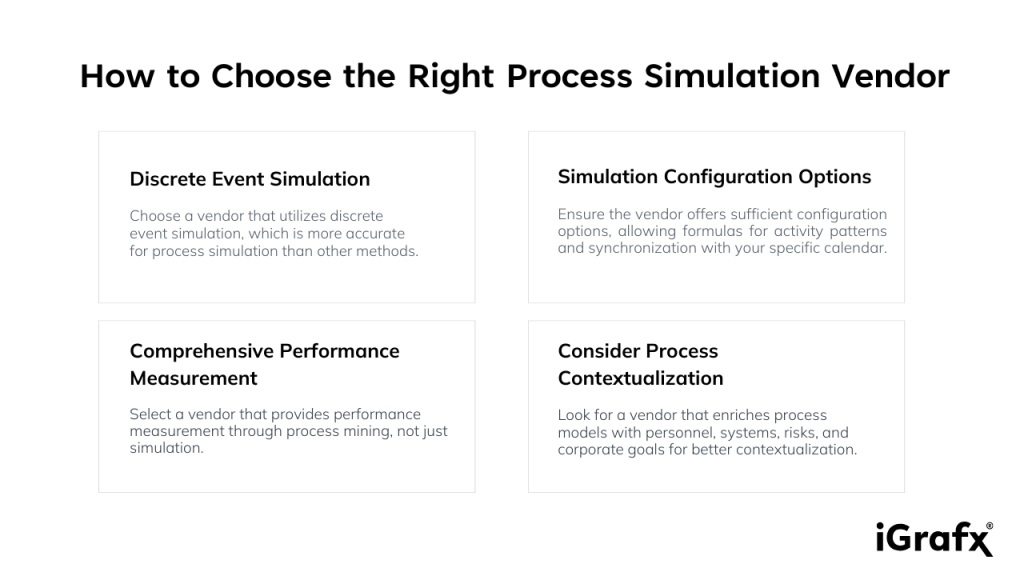“Change is the only constant in life.” Although Greek philosopher Heraclitus may not have been able to understand what the world looks like today, this maxim has withstood the test of time. In the business world, companies know that they must change to stay relevant. New competitors, technology breakthroughs, talent scarcity, and the ever-evolving customer expectations all dictate that businesses must act.
The boardroom has passed business and digital transformation mandates onto executive teams, who have in turn passed them on to the employees to enact. But the change isn’t happening, at least at the pace required. Amidst this challenge, emerging technologies like process simulation technology offer a beacon of hope.
The Risk of Process Change
So, what’s holding businesses back? The unknown of course. For all the positives that change can bring, it can be unpredictable, lead to unknown outcomes, and at worst cost the business financially and reputationally. There are too many variables to be able to understand what the ripple effect of even a slight change could be and mission-critical processes can’t afford any amount of downtime. Even if every improvement option were positive, which ones move the needle the most? There is always an opportunity cost.
No one can predict the future, but that doesn’t mean that you can’t make more educated, data-driven decisions. As I said, we’ve come a long way since the ancient Greek philosophers. This is where process simulation technology comes in.
Overcoming the Risk
At its core, process simulation technology leverages actual process data to confirm change hypotheses, highlight any unforeseen consequences, and quantify return on investment. There are several areas in which this is particularly useful.
Decision Support
As mentioned, process simulation quantifies the impact of a change in terms of efficiency, cost, and compliance. It can help support strategic decision making for a business by providing an ROI (return on investment) for a given change. This results in a prioritized list of process improvement ideas with their associated cost and impact.
It helps answer questions like:
- What is the return on investment of buying this machine?
- How will my costs be affected if I swap a non-recyclable material for a recyclable one?
What-if Analysis
Unlike decision support which focuses on measuring known outcomes, what-if analysis looks to simply understand the effects of making a change. Things such as new bottlenecks being created or unforeseen compliance considerations.
It helps answer questions like:
- What is the customer impact if we deploy AI agents in our call center?
- What if I reallocate personnel to adjust for seasonal needs?
Predictions/Projections
Whereas the earlier two uses focused on understanding the result of making a change, prediction/projection analysis helps you understand how to get to (or how to prevent) a specific outcome.
It helps answer questions like:
- How much can sales increase before bottlenecks appear in delivery?
- How fast will my backlog grow if we remain under-resourced?
Root-Cause Analysis
Lastly, root-cause analysis aids in understanding challenges with the current process. This is particularly powerful when paired with another technology, process mining, for the richest insights.
It helps answer questions like:
- Is this bottleneck because of imbalanced teams or because of resource constraints?
- What steps in the process are causing it to slow down?
Looking Under the Hood
You’re probably wondering how this works out. It follows a few simple steps.
First you build a new process model (typically BPMN) or use a previous model that you already have or have built with a partner. You then configure the model (e.g., how long does this activity take? What is the probability that this will occur?). Process mining can be particularly useful here to gather the data objectively.
Then run it. This is your baseline.
Then change the parameters (e.g., adding a person you’re considering hiring)
Run it again. Change the parameters. Then run it again…and so on and so forth.
At the end of the day, you’ll have a report on proposed options, their requisite investments, and impact. This will be especially helpful when presenting to those that can give you budget.
Choosing the Right Process Simulation Technology
You’re probably wondering how to choose the right process simulation vendor to get started. There are a couple of considerations to keep in mind.
Specifically for process simulation and other types of simulations that involve time-series data, you’ll want to choose a simulation vendor that uses discrete event simulation. It is much more accurate than other simulation methods such as Monte Carlo for this purpose.
You’ll also want to make sure that the simulation configuration options are sufficient for your needs. Does the vendor allow you to use formulas to describe different activity patterns (sales increase around Black Friday) and are you able to synchronize to your specific calendar (regional holidays, different shifts, and overtime)?
And lastly, you’ll want a process simulation vendor that can go beyond the simulation itself. Both by measuring performance through process mining as well as contextualizing the processes you’re simulating, enriching the process models with associated personnel, systems, documentation, risks, and the corporate goals that they impact.


